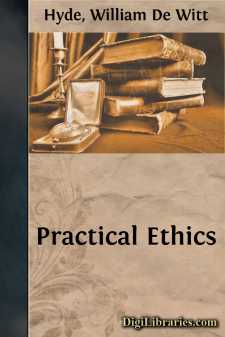Categories
- Antiques & Collectibles 13
- Architecture 36
- Art 48
- Bibles 22
- Biography & Autobiography 813
- Body, Mind & Spirit 142
- Business & Economics 28
- Children's Books 17
- Children's Fiction 14
- Computers 4
- Cooking 94
- Crafts & Hobbies 4
- Drama 346
- Education 46
- Family & Relationships 57
- Fiction 11829
- Games 19
- Gardening 17
- Health & Fitness 34
- History 1377
- House & Home 1
- Humor 147
- Juvenile Fiction 1873
- Juvenile Nonfiction 202
- Language Arts & Disciplines 88
- Law 16
- Literary Collections 686
- Literary Criticism 179
- Mathematics 13
- Medical 41
- Music 40
- Nature 179
- Non-Classifiable 1768
- Performing Arts 7
- Periodicals 1453
- Philosophy 64
- Photography 2
- Poetry 896
- Political Science 203
- Psychology 42
- Reference 154
- Religion 513
- Science 126
- Self-Help 84
- Social Science 81
- Sports & Recreation 34
- Study Aids 3
- Technology & Engineering 59
- Transportation 23
- Travel 463
- True Crime 29
Sort by:
by:
Aesop
A wolf there was, whose scanty fare Had made his person lean and spare; A dog there was, so amply fed, His sides were plump and sleek; 'tis said The wolf once met this prosp'rous cur, And thus began: "Your servant, sir; I'm pleased to see you look so well, Though how it is I cannot tell; I have not broke my fast to-day; Nor have I, I'm concern'd to say, One bone in store or...
more...
by:
Ambrose Bierce
The Introduction Brilliant and magnetic as are these two studies by Ambrose Bierce, and especially significant as coming from one who was a boy soldier in the Civil War, they merely reflect one side of his original and many-faceted genius. Poet, critic, satirist, fun-maker, incomparable writer of fables and masterly prose sketches, a seer of startling insight, a reasoner mercilessly logical, with the...
more...
THE FIRST CHAPTER. EGELRED. In the former booke was discoursed the troubled state of this land by the manifold and mutinous inuasions of the Danes; who though they sought to ingrosse the rule of euerie part and parcell therof into their hands; yet being resisted by the valiantnesse of the gouernors supported with the aid of their people, they were disappointed of their expectation, and receiued manie a...
more...
by:
Barnum Brown
Chapter I. Its Antiquity, Duration and Significance in Geologic History. Palæontology deals with the History of Life. Its time is measured in geologic epochs and periods, in millions of years instead of centuries. Man, by this measure, is but a creature of yesterday—his "forty centuries of civilization" but a passing episode. It is by no means easy for us to adjust our perspective to the...
more...
by:
Allen Johnson
CHAPTER I JACKSON THE FRONTIERSMAN Among the thousands of stout-hearted British subjects who decided to try their fortune in the Western World after the signing of the Peace of Paris in 1763 was one Andrew Jackson, a Scotch-Irish Presbyterian of the tenant class, sprung from a family long resident in or near the quaint town of Carrickfergus, on the northern coast of Ireland, close by the newer and more...
more...
by:
J.C. Gorham
DOWN THE RAB-BIT HOLE. Al-ice had sat on the bank by her sis-ter till she was tired. Once or twice she had looked at the book her sis-ter held in her hand, but there were no pict-ures in it, "and what is the use of a book," thought Alice, "with-out pict-ures?" She asked her-self as well as she could, for the hot day made her feel quite dull, if it would be worth while to get up and pick...
more...
Ethics is the science of conduct, and the art of life. Life consists in the maintenance of relations; it requires continual adjustment; it implies external objects, as well as internal forces. Conduct must have materials to work with; stuff to build character out of; resistance to overcome; objects to confront. These objects nature has abundantly provided. They are countless as the sands of the...
more...
THE MOTHER'S PRAYER "God grant that it may never happen, Paul; God grant that England may never be invaded, that her foes may never land upon our shores." And the lips of Mrs. Percival moved in silent prayer. Paul regarded the loved face of his mother for a minute or two thoughtfully, as though he were longing to put to her many questions, but dared not. At length he said, breaking the...
more...
CHAPTER I The elm-tree avenue was all overgrown, the great gate was never unlocked, and the old house had been shut up for several years. Yet voices were heard about the place, the lilacs nodded over the high wall as if they said, "We could tell fine secrets if we chose," and the mullein outside the gate made haste to reach the keyhole, that it might peep in and see what was going on. If it had...
more...
Borrow had at last found work that was thoroughly congenial to him. It was not in his nature to exist outside his occupations, and his whole personality became bound up in the mission upon which he was engaged. Not content with preparing the way for printing the New Testament in Manchu, he set himself the problem of how it was to be distributed when printed. He foresaw serious obstacles to its...
more...











